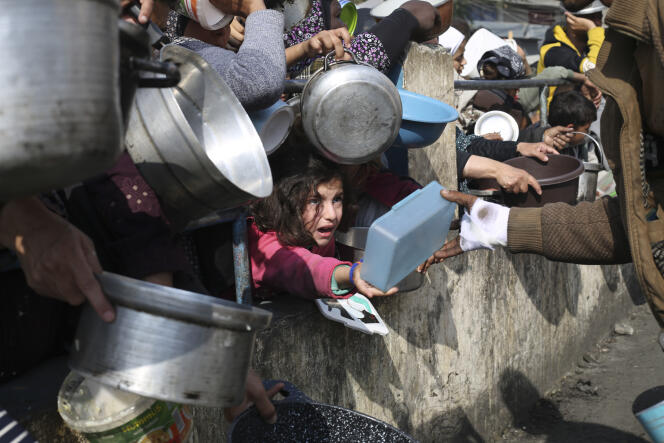


Hunger and famine have all too often played a part in the long Palestinian tragedy. In 1987, the blockade imposed by pro-Syrian militias on the Palestinian camps south of Beirut was so severe that the besieged population obtained a fatwa authorizing them to eat cats and dogs. From 2013 to 2015, the siege imposed by the Assad regime on the Palestinian Yarmouk camp, on the outskirts of Damascus, caused hundreds of people to die, either from hunger or because they were killed while searching for food.
Just as the ongoing catastrophe in Gaza has already racked the Palestinian people more than any other event in the past, hunger, too, is now haunting Gaza. This time, the people affected are not a few thousand as during the sieges of Beirut or Damascus, but hundreds of thousands.
Already a month ago, the World Health Organization (WHO) claimed that "93% of the population in Gaza [was] facing crisis levels of hunger." And Israel's relentless attacks have only worsened the situation over the past few weeks.
As early as October 9, 2023, two days after the Hamas terrorist attacks in Israel, Israel's Defense Minister Yoav Gallant announced that food, energy and fuel supplies to the Gaza Strip would be suspended. Other members of the Netanyahu government also issued similar statements. This caused an inexorable deterioration in the food situation of the 2.3 million inhabitants of the besieged enclave. Even before the current conflict, 80% of the population was already dependent on humanitarian assistance for food and only 2% had access to drinking water, as a result of 16 years of Israeli blockade.
It was only on November 15, 2023, that Israel allowed 23,000 liters of fuel into Gaza from Egypt – much less than the 160,000 liters needed daily to ensure basic services. On the same day, an Israeli bombardment destroyed the last flour mill still operating in the enclave, where it is now impossible to produce flour locally. The reserves on which civilians were able to subsist during the first weeks of the siege were rapidly depleted, as 85% of the population was successively displaced from their homes by Israeli bombardments and sometimes forced to seek new refuge one or more times.
Orchards and fields have been ransacked by the invaders or abandoned for lack of irrigation, while livestock are slowly dying off, gradually reducing the territory's agricultural production to nothing.
On December 6, 2023, the World Food Program (WFP) claimed that nine out of 10 families in the north of the enclave, as well as two out of three in the south, have spent one full day and night without any food at all. Civilians are beginning to organize themselves to survive on just one meal a day. The average amount of drinking water available per person per day has fallen to one and a half liters. That was already a month and a half ago.
You have 45% of this article left to read. The rest is for subscribers only.
